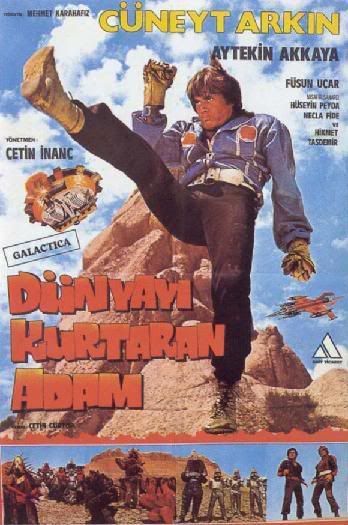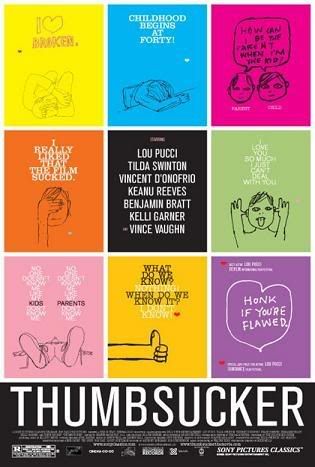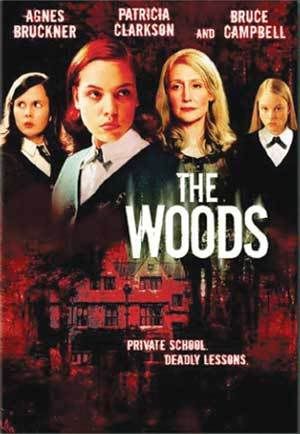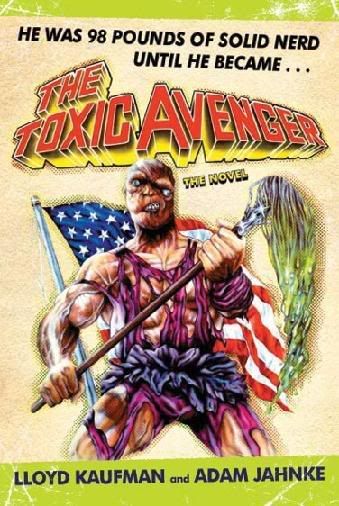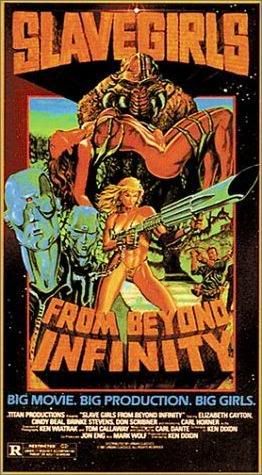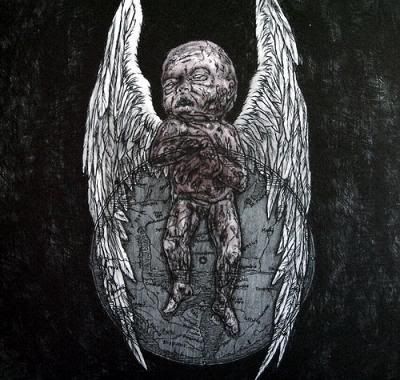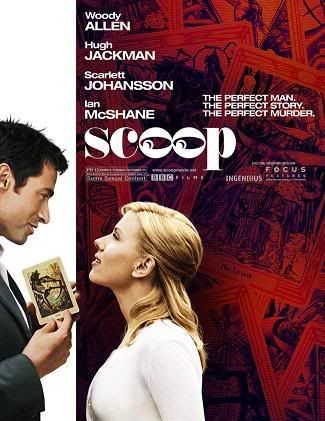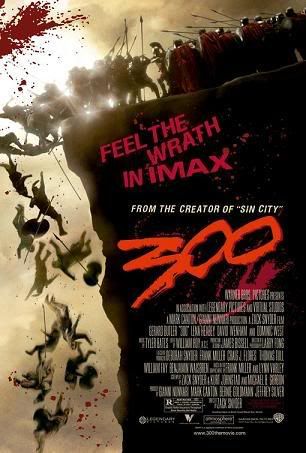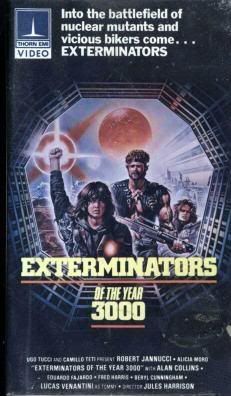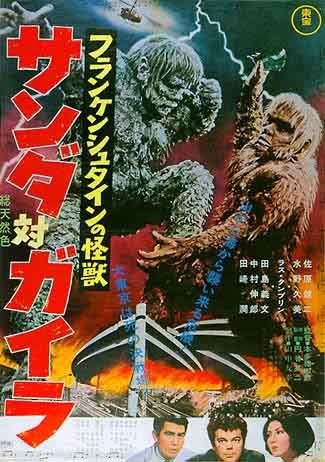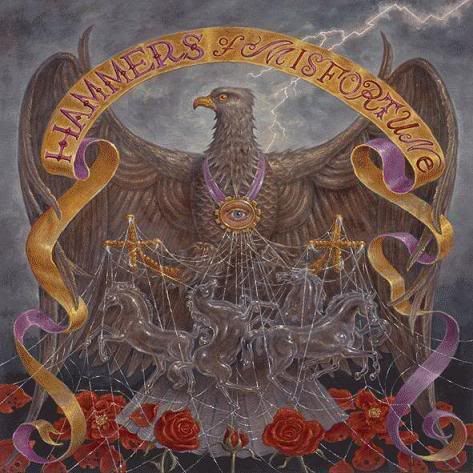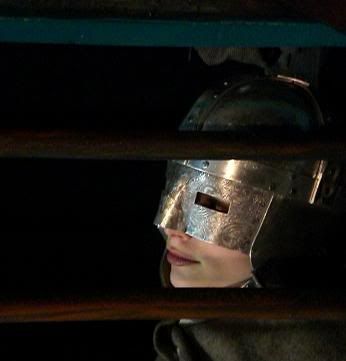Every time I hear people say "there's no good new music," it boggles my mind. Maybe on the radio there isn't, but I'm not having any trouble finding enjoyable current stuff. As evidence, I present a new set of tunes in the mp3 player to your right. They all come from 2007 releases, and I think they all jam. If I had use for an iPod, the current playlist would look a lot like this. Here's the rundown, with my dumb comments to pass for today's review.
1. Beirut: "Elephant Gun" (Lon Gisland, Ba Da Bing!) - Hot on the heels of last year's amazing debut
Gulag Orkestar comes a short EP of more folk-pop with a Balkan soul. If Stephin Merritt had been born a Gypsy, The Magnetic Fields might sound more like this. Given the winsome, world-weary European elegance of the music, it's still hard to believe Beirut is the product of an American kid who's not old enough to drink. That Zach Condon and crew already have new material out speaks of their productivity and sets the stage for a hopefully long career. Just tell me this song is not awesome.
2. Manowar: "Gods of War" (Gods of War, Magic Circle) - "Elephantine" would be a kind way to describe the latest slab from the self-described Kings of Metal. "Way too long" is more accurate. When I was about 14, Manowar's soaring tales of violence and steel made them one of my favorite bands, but many years of inactivity, puffery and repetition have lowered their status for me. Plus, I ain't 14, so what was once cool seems mighty ridiculous now. Nonetheless, they still deliver the goods once in a while, and this lil' war march is a real fist-pumper. Dig the battle horns. Someone should use it in an action figure commercial. Warriors of True Metal, Hold Thy Lite Beers High!
3. Naglfar: "Plutonium Reveries" (Harvest, Century Media) - Remarkably better than their last outing, with
Harvest, Naglfar reclaims Sweden's leading place in the malevolently melodic black/death sweepstakes. It seemed like the band lost inspiration when frontman Jens Rydén left (he joined Thyrfing a few weeks ago!), but Kristoffer Olivius has steered the ship of nails back to more inspired waters. Although this song is at times reminiscent of Dissection's old hit "Where Dead Angels Lie" (especially the riff in the chorus, which gives me the chills anyway), it's way better than anything on last year's disappointing Dissection comeback/farewell disc.
4. Bloc Party: "Where Is Home?" (A Weekend in the City, Vice) - I have been shouting about this album for a while. It's still the only "complete wow" record I've heard so far this year.
Weekend is more atmospheric and commitedly melodic than Bloc Party's great debut,
Silent Alarm, feeling like a more serious, personal and mature version of the Brits' intoxicating blend of post-punk rhythm and college rock malaise. It was hard to pick a single track to represent it here, but I went with this driving, electro-touched number addressing xenophobic violence against immigrants (frontman Kele Okereke's parents came from Nigeria). I love Russell Lissack's guitar during the sweepingly sad chorus.
Weekend is instantly catchy, yet there is much to explore upon subsequent listens. 100% recommended, especially for Cure fans.
5. Lumsk: "Svend Herlufsens Ord, Del IV Se, Natten Er Livet" (Det Vilde Kor, Tabu) - A folk metal band who have lost most of the metal (see also: Cruachan), Norwegians Lumsk won their country's first by:Larm Grant for their take on native culture. Thus, it's not surprising that their new CD has a wider appeal, at times approaching heavy prog rock but never galloping straight into metal territory. This track is one of the loudest, relatively speaking, and most engaging for those of us who know little about the album's subject - an adaptation of works by famed Norwegian poet Knut Hamsun.
6. Disbelief: "Passenger" (Navigator, Massacre) - Navigator is a return to form for these Germans, who seemed to be drifting toward ill-advised nü-metal tropes in recent years. While still containing its share of boxy beats and vocal tics, it's also more committed to the grueling groove that made their earlier work so affecting. While Disbelief has once again seamlessly integrated the ambient and the active, I still prefer their doomier numbers such as this one, a wonderfully miserable trudge through the land of iconoclasm.
7. 65daysofstatic: "Morning in the Knife Quarter" (Don't Go Down to Sorrow, Monotreme) - I just learned about this British instrumental quartet, so I can't offer you any background or comparison to previous work. However, having heard this three-track single from their soon-to-be-released third disc,
The Destruction of Small Ideas, I have a feeling I'll know more soon. This non-album track is a bright mix of post-rock textures, mathy instrumentation and dancy IDM beats, which seems to be the way they do it in general. Think Hot Chip, but with no singing and nowhere near as simplistic.
8. Aesop Rock: "None Shall Pass (clean version)" (DefinitiveSwim, AdultSwim.com) - Coming from a new sampler of Definitive Jux artists released online via Adult Swim, the long-awaited return of Aesop Rock has been noticeably edited. Aes just released a 45 minute-long track via iTunes called
All Day: Nike + Original Run, commissioned by the sneaker giant as part of some series of releases intended for joggers. This song is not part of that project, although it does have an insistent pace and keyboard hook that would work if you're the sort who runs when your life isn't threatened. It's the announced title track from his upcoming fourth LP. He spits rhymes like a champ, and you can dance to it. Click that link a few lines up to get the sampler. There's a new El-P song and great Mr. Lif remix with Cannibal Ox on it. It's cool and free and legal.
9. Mors Principium Est: "The Animal Within" (Liberation = Termination, Listenable) - Yes! Another dance tune! Heh, behold the false "club mix" start, an old metal trick that works perfectly here, sliding effortlessly from throbbing Eurodance to a choppy thrash riff. Greatly hyped by lovers of melodic death metal, Finland's Mors Principium Est does this shit right. Their riffing is straightforward but memorable, reminding me of early Soilwork (the vocals, too), but there's also a technicality at work that's as pure and driven as the Amott brothers were when Arch Enemy wasn't trying to be so crowd-pleasing. The keyboards give it the sheen of modern Dark Tranquillity, but the overall aggression is greater here. Mors Principium Est isn't rewriting the book, but they learned well from the greats.
10. Therion: "Trul" (Gothic Kabbalah, Nuclear Blast) - Therion changed their sound quite a bit on this new double album, and not just because mainman Christofer Johnsson finally stopped singing completely. Long ago Therion was a pretty good atmospheric Swedish death metal band, then slowly started adding bombastic symphonic and operatic elements until they were pretty much a freaking orchestra and choir with a metal band chugging away over it. It's a cool sound, but they did a lot of samey records up to this one. With Johnsson's hollering gone for good, several solitary vocalists step up to the front, where choirs once smothered everything. The music's a lot more engaging - it's heavier, there are a lot of proggy workouts and some songs have a sort of pop angle, like this folky one sung by Katarina Lilja. It's a little Tull, and waaaay better than Evanescence.
11. Chase Pagan: "Spanish Tongue" (Chase Pagan, Insound.com) - I typically sneer at people named Chase, but this singer/songwriter from Arkansas gets a pass. His album doesn't come out until summer, but there is a free and legal EP available that you will find if you click that link up there. Chase's songs are pretty interesting, theatrical and complex, frequently employing falsetto and piano. He's definitely not trying to convince you he's a normal and safe and sincere pop-rock pin-up. Yes, he does a Queen cover, and it's pretty convincing. I would like to hear his album, because if he can sustain this varied and rich approach over an entire LP, this guy might be going places.
12. The Cinematics: "Break" (A Strange Education, TVT) - A "college rock" act if ever there was one, The Cinematics sound like a few different bands on their debut. There's a lot of dull filler, especially the mellow songs, which are like watching paint dry in Coldplay's rehearsal loft. The faster new wave ones are more enjoyable, although they all seem mimeographed from the Interpol/Editors page of Joy Division worship. Hey, better nicking from that than from Franz Ferdinand - The Cinematics are Scottish, after all. This song was their first single and to me the catchiest song offered. Not too much to say about this one, other than don't expect an entire album as engaging as this slice of art school fashion-plate disco.
13. Trail of Tears: "The Closing Walls" (Existentia, Napalm) - Shortly after recording the new Trail of Tears record, most of the band left. That really doesn't mean much, because vocalist Ronny Thorsen has been the driving force behind Trail of Tears for a long time. That's Ronny doing the raspy gremlin vocals here, as he has since the beginning. What's going to be the biggest blow is the loss of the other male vocalist, Kjetil Nordhus, who is also the voice of Green Carnation. When Nordhus came into the band a few years ago, their focus changed from decent but unspectacular gothic doom/death in the vein of early Theatre of Tragedy or Tristania to a more individual sort of proggy/goth/Eurometal thing. Cathrine Paulsen, the hottest girl who was ever in the band, has returned to Ronny's side, but she's not on
Existentia - that's French session singer Emmanuelle Zoldan lending her lovely accent to the interlude.
14. The Arcade Fire: "Intervention" (Neon Bible, Merge) - Neon Bible is one of this spring's most anticipated indie superstar platters, a sophomore follow-up to the surprise hit
Funeral. Overall, it's less impressive upon first listen, but what at first seems like timid malaise reveals itself to be a more stately form of grandeur. Although relatively sedate compared with the delirious detours on
Funeral, the Montreal mini-orchestra does have their uptempo moments, such as this typically joyful-sounding but lyrically dark ditty, the first track The Arcade Fire released to the public.
Neon Bible actually debuted at number two on the Billboard Top 200, so I don't know why I'm telling you about it, other than to say not everything in the charts is pure shit.
15. Rotting Christ: "Nemecic" (Theogonia, Season of Mist) - Let me summarize the post I wrote when this was the song on my MySpace profile: The early melodic black metal stuff by Greece's Rotting Christ was pretty cool, but then they got all keyboardy and repetitive and I lost interest.
Theogonia came out on a different label, with the band touting its enhanced "Hellenic cultural elements," amounting to Greek instruments and vocals strewn throughout the album. That alone would have sold me, but they also offer a surprisingly strong and forceful collection of guitar melodies. The whole thing is amazingly free of tedium, but this track is probably my favorite as far as the Greek-y stuff goes.
16. Dew-Scented: "Final Warning" (Incinerate, Nuclear Blast) - If not better than, then at least as good as Slayer's recent
Christ Illusion,
Incinerate will not sell nearly as many units. That's a shame. These guys are Germany's greatest contribution to aggressive thrash since the glory days of the Kreator/Destruction/Sodom triumvirate. Record number seven finds them holding the same pattern of indignant mastery they've possessed since 1999's
Ill-Natured, guitars like well-oiled buzzsaws and drums like a pacemaker for a superhuman cannibal who drinks too much coffee. This track is my favorite from the new one, probably because of the nimble breakdowns. Due to its similarity to past work,
Incinerate does beg the question of how many records like this someone my age needs, but if I keep buying them, I will continue to buy Dew-Scented. Quality is assured.
17. A Northern Chorus: "The Canadian Shield" (The Millions Too Many, Sonic Unyon) - More indie pop from Canada, this time from an Ontario band I recently heard for the first time. I don't know much about A Northern Chorus, but this is from their fourth LP, a pleasant Sunday afternoon album if I've ever heard one. This one is an immersive ballad with a beautiful shoegazer guitar refrain, soft vocals adding texture but never intruding upon the peaceful lope of the band. A number of the other tunes on the disc have a sort of folk/Americana flavor mixed in with the atmospherics. Although this song grabbed me the most, I would encourage anyone to whom that description sounds appealing to check A Northern Chorus out.
18. Dødheimsgard: "The Snuff Dreams Are Made Of" (Supervillain Outcast, Moonfog) - Eight years after the amazing
666 International melted faces, the electronic black metal freakazoids of Dødheimsgard (or is it just DHG now?) return with a surprisingly similar disc, albeit one far less hallucinatory and petulant. There's an assured malevolence beneath the new clattering tirades, and even a rare respite of tunefulness, similar to what a few of these Norse nutjobs did on the overlooked Code album
Nouveau Gloaming a couple of years back. At a time when electro metal is in a dire state, thers is definitely a welcome return.
19. The Tossers: "Siobhan" (Agony, Victory) - One of the best fucking live bands in Chicago return with a remarkably mature and somewhat dark album, still kicking out boisterous Celtic folk/punk jams that demand to be played again and again but with a heart that remains sober no matter how many suds it soaks up. It wasn't until a couple of years ago, when I found myself unduly enchanted by a young lady who was a big fan of The Tossers, that I contemplated how truly excellent they are on the instrumental and verbal front. Not many bands can pull off the personal and the political with such sincerity, all the while serving infectious Irish melodies like they were Jameson's the day after Easter. Then again, maybe I like this hearty sing-along so much because it's about having the hots for a beautiful lass who drinks like a maniac...
20. Novembers Doom: "Dominate the Human Strain" (The Novella Reservoir, The End) - In conclusion, here's another veteran Chicago act kicking ass. Much has been made in the metal press about the variation in tempo found on
The Novella Reservoir. As can be heard on this rollicking selection, they're not always slow and mournful all the time anymore, although Novembers Doom hasn't strictly been a doom/death band in a while. Still, this new disc mixes it up more than ever, making it more appealing to a wider range of headbanger. My other favorite track on the album is a very moving mellow tune that vocalist Paul Kuhr wrote about his baby daughter, so I'm not just echoing the rest of the reviewers - these guys are getting more diverse and more engaging with every release. I'm interviewing Paul on Friday, in advance of ND's appearance at next month's Chicago Powerfest (Solitude Aeturnus! Martyr! Saturnus!
ATHEIST! You should go!), and you will probably not read the whole chat when I post it, but I'll do it anyway.
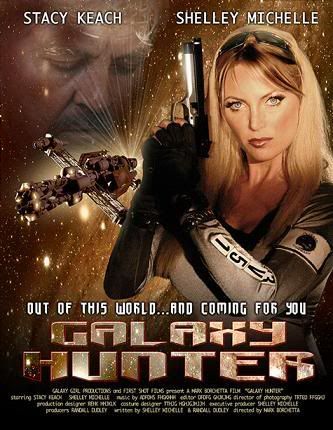 "Galaxy Hunter"
"Galaxy Hunter" I wanted to do something with meat, and since I've never cooked pork (bacon doesn't count), pork chops sounded like a good start. I wanted some recipe for stuffing them with mushrooms, so I Googled "pork chop," "stuffed" and "mushroom" and stumbled around until I came across one I liked from cooks.com. It looked pretty involved, but I didn't have to buy any extra equipment this month.
I wanted to do something with meat, and since I've never cooked pork (bacon doesn't count), pork chops sounded like a good start. I wanted some recipe for stuffing them with mushrooms, so I Googled "pork chop," "stuffed" and "mushroom" and stumbled around until I came across one I liked from cooks.com. It looked pretty involved, but I didn't have to buy any extra equipment this month. You start by defrosting a 10 oz. package of frozen spinach. I suppose it's just easier to measure frozen than fresh - spinach really shrinks when you cook it. You mix the spinach with 1/2 cup of chopped onion and 3/4 cup of chopped mushrooms, both of which require less raw material than I anticipated. (Leftover mushrooms aren't a problem to me.) Also, you want 1/2 teaspoon of salt, 1/8 teaspoon of pepper and 1/4 teaspoon nutmeg. This last ingredient makes the whole experience... I never would have thought to try nutmeg with pork on my own. This mix of veggies and spices is your stuffing, and it's pretty simple. Now you attend to the meat.
You start by defrosting a 10 oz. package of frozen spinach. I suppose it's just easier to measure frozen than fresh - spinach really shrinks when you cook it. You mix the spinach with 1/2 cup of chopped onion and 3/4 cup of chopped mushrooms, both of which require less raw material than I anticipated. (Leftover mushrooms aren't a problem to me.) Also, you want 1/2 teaspoon of salt, 1/8 teaspoon of pepper and 1/4 teaspoon nutmeg. This last ingredient makes the whole experience... I never would have thought to try nutmeg with pork on my own. This mix of veggies and spices is your stuffing, and it's pretty simple. Now you attend to the meat. Once your chops are stuffed, you put some salt and pepper on them, roll them in flour and brown them with some butter in a skillet. With the toothpicks in place, this is easier said than done, but I just slid the meat flat and it browned with no problem. The chops supposedly go into a 9"x13" baking dish, but I needed two because of their size. Next comes the first part of making the sauce, my favorite step. Once your skillet has cooled off a little, pour in 1 and 1/2 cups of white wine (I went with a $10 chardonnay of some sort) and swirl it around to mix in the gunk from the pork. Then you dump this over the chops, cover them and stick the whole mess in the over at 350 degrees for an hour.
Once your chops are stuffed, you put some salt and pepper on them, roll them in flour and brown them with some butter in a skillet. With the toothpicks in place, this is easier said than done, but I just slid the meat flat and it browned with no problem. The chops supposedly go into a 9"x13" baking dish, but I needed two because of their size. Next comes the first part of making the sauce, my favorite step. Once your skillet has cooled off a little, pour in 1 and 1/2 cups of white wine (I went with a $10 chardonnay of some sort) and swirl it around to mix in the gunk from the pork. Then you dump this over the chops, cover them and stick the whole mess in the over at 350 degrees for an hour.
